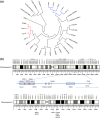Update of P2Y receptor pharmacology: IUPHAR Review 27
- PMID: 32037507
- PMCID: PMC7205808
- DOI: 10.1111/bph.15005
Update of P2Y receptor pharmacology: IUPHAR Review 27
Abstract
Eight G protein-coupled P2Y receptor subtypes respond to extracellular adenine and uracil mononucleotides and dinucleotides. P2Y receptors belong to the δ group of rhodopsin-like GPCRs and contain two structurally distinct subfamilies: P2Y1 , P2Y2 , P2Y4 , P2Y6 , and P2Y11 (principally Gq protein-coupled P2Y1 -like) and P2Y12-14 (principally Gi protein-coupled P2Y12 -like) receptors. Brain P2Y receptors occur in neurons, glial cells, and vasculature. Endothelial P2Y1 , P2Y2 , P2Y4 , and P2Y6 receptors induce vasodilation, while smooth muscle P2Y2 , P2Y4 , and P2Y6 receptor activation leads to vasoconstriction. Pancreatic P2Y1 and P2Y6 receptors stimulate while P2Y13 receptors inhibits insulin secretion. Antagonists of P2Y12 receptors, and potentially P2Y1 receptors, are anti-thrombotic agents, and a P2Y2 /P2Y4 receptor agonist treats dry eye syndrome in Asia. P2Y receptor agonists are generally pro-inflammatory, and antagonists may eventually treat inflammatory conditions. This article reviews recent developments in P2Y receptor pharmacology (using synthetic agonists and antagonists), structure and biophysical properties (using X-ray crystallography, mutagenesis and modelling), physiological and pathophysiological roles, and present and potentially future therapeutic targeting.
© 2020 The British Pharmacological Society.
Conflict of interest statement
The authors declare that there are no conflicts of interest.
Figures




References
-
- Abbracchio, M. P. , Boeynaems, J. M. , Boyer, J. L. , Burnstock, G. , Ceruti, S. , Fumagalli, M. , … Weisman, G. A. (2019). P2Y receptors (version 2019.4) in the IUPHAR/BPS Guide to Pharmacology Database. IUPHAR/BPS Guide to Pharmacology CITE. 2019(4). Available from: 10.2218/gtopdb/F52/2019.4. - DOI
-
- Abbracchio, M. P. , Burnstock, G. , Boeynaems, J. M. , Barnard, E. A. , Boyer, J. L. , Kennedy, C. , … Weisman, G. A. (2006). International Union of Pharmacology LVIII. Update on the P2Y G protein‐coupled nucleotide receptors: From molecular mechanisms and pathophysiology to therapy. Pharmacological Reviews, 58, 281–341. - PMC - PubMed
Publication types
MeSH terms
Substances
Grants and funding
LinkOut - more resources
Full Text Sources
Other Literature Sources
Molecular Biology Databases

